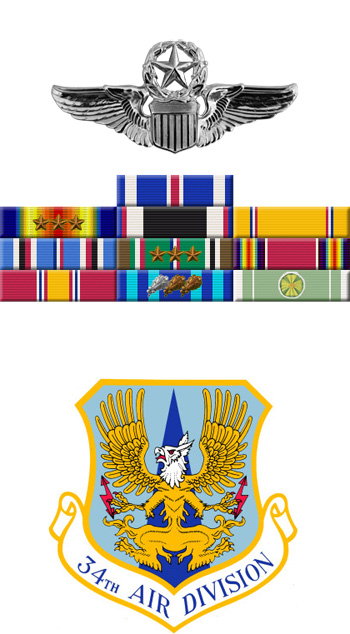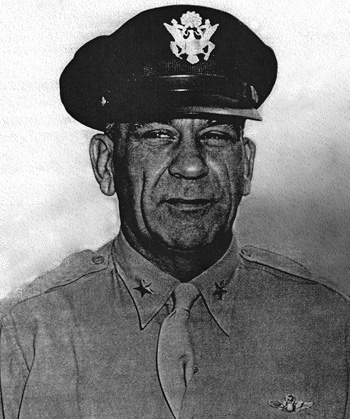
|
Thomas W. Blackburn |
 |
|||
| Rank, Service | ||||
Brigadier General O-7, U.S. Air Force |
||||
| Veteran of: | ||||
|
||||
| Tribute: | ||||
Thomas Blackburn was born on April 23, 1892, in Cane Hill, Arkansas. He enlisted as an Aviation Cadet in the Aviation Section of the U.S. Army Signal Corps on August 15, 1917, and was commissioned a 1st Lt in the Aviation Section on April 4, 1918. Lt Blackburn served in England and France with IV Pursuit Group during World War I, returning to the U.S. in September 1919, and then served with the 1st Pursuit Group at Kelly Field, Texas, from October 1919 to November 1920. His next assignment was at Langley Field, Virginia, from November 1920 to November 1921, followed by service at Ellington Field, Texas, from November 1921 to July 1922. He served as operations officer at Selfridge Field, Michigan, from July 1922 to January 1925, and then served as and flight instructor and then director of pursuit training at the Air Service Advanced Flying School at Kelly Field from January 1925 to April 1929. Capt Blackburn next served as operations officer of the 3rd Pursuit Squadron at Clark Field in the Philippines from April 1929 to May 1931, followed by service as an aviation instructor for the Organized Reserves at Houston, Texas, from May 1931 to August 1935. His next assignment was with the National Guard Bureau in Washington, D.C., from August 1935 to July 1939, and he then served as operations officer for the 19th Bomb Group at March Field, California, from July 1939 to June 1941. Col Blackburn next served as chief of staff of the 4th Air Force Base Command in San Francisco, California, from June 1941 to February 1942, followed by service as commander of the 9th Interceptor Command at New Orleans, Louisiana, from February to August 1942. He served as chief of staff of the 4th Bomb Wing at Bolling Field in Washington, D.C., from August to September 1942, and then deployed to England as commanding general of 12th Fighter Command from September 1942 to April 1943. After returning to the U.S., Gen Blackburn served as commander of the 31st Flying Training Wing at Enid, Oklahoma, from April 1943 to March 1944, followed by service as commanding general of 3rd Fighter Command at Drew Field, Florida, from March 1944 to November 1945. His next assignment was as commander of the 302nd Army Air Force Base Unit at Hunter Field, Georgia, from November 1945 to May 1946, and then as commander of the 316th Army Air Force Base Unit at Shaw Field, South Carolina, from May 1946 to August 1947. He was commander of the 7th Fighter Wing in Hawaii from August 1947 to April 1948, and then served as commander of the 81st Fighter Wing in Hawaii and then at Kirtland AFB, New Mexico, from May 1948 to April 1950. His next assignment was with the Western Air Defense Force at Hamilton AFB, California, from May 1950 to January 1951, followed by service as commander of the 34th Air Division at Kirtland AFB from January to April 1951. Gen Blackburn's final assignment was as President of the Physical Evaluation Board at Maxwell AFB, Alabama, from April 1951 until his retirement from the Air Force on May 1, 1952. Thomas Blackburn died on September 27, 1964, and was buried at the Fort Sam Houston National Cemetery in San Antonio, Texas. |
||||
|
||||

